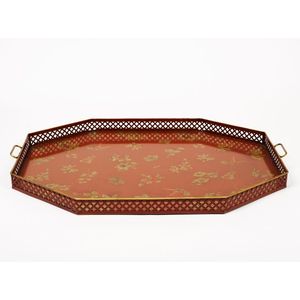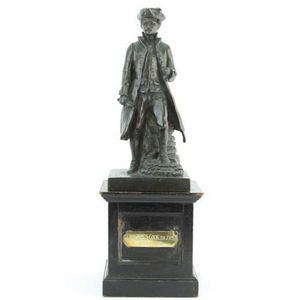Antique Glass Reliquary Casket with Gilt Bronze Mounts
You must be a subscriber, and be logged in to view price and dealer details.
Subscribe Now to view actual auction price for this item
When you subscribe, you have the option of setting the currency in which to display prices to $Au, $US, $NZ or Stg.
- Bevel / Chamfer - In furniture making, a chamfered corner refers to a technique used to create a smooth, angled edge on the corner of a piece of furniture. This is typically done by cutting away a small portion of the corner at an angle, typically 45 degrees, creating a diagonal edge, rather than a sharp 90-degree angle. This technique can be used on various parts of a piece of furniture such as table legs, drawer fronts, or door frames. Chamfering can add visual interest to a piece and can help to soften the overall look of a piece of furniture. It is often used in conjunction with other techniques, such as rounding edges or using contrasting wood species to create a more elegant, sophisticated look. Chamfering is a simple way to add a touch of elegance to a piece of furniture and it is a common technique used by furniture makers.
- Bronze - An alloy of copper and tin, traditionally in the proportions of about 9 parts of copper to 1 part of tin.
The discovery of bronze in Western Asia in the 4th century enabled people to create metal objects which were superior to those previoulsy possible because of its strength and hardness, and it has been used throughout the world for weapons, coins, tools, statuary and other decorative items.
It is very fluid in a molten state, and its hardness, strength when set, and non-corrosive properties makes it most suitable for casting sculpture.
This item has been included into following indexes:
Visually similar items

Pink & blue painted cabinet, approx 53 cm high, 136 cm long, 46 cm deep

Large toleware tray with pierced gallery, painted red and gold. Width 78 cm depth 59 cm Provenance: Brook Street Trading, Woollahra

Early bronze copy of Captain James Cook, after Sir Thomas Brock standing on a timber base, with a plaque reading 'Capt. James Cook, RN, Frs 1728-1779'. Condition: good, minor wear consistent with age, height including base 42.5 cm

A splendid Persian prayer rug featuring traditional patterns and motifs 168 cm x 102 cm
